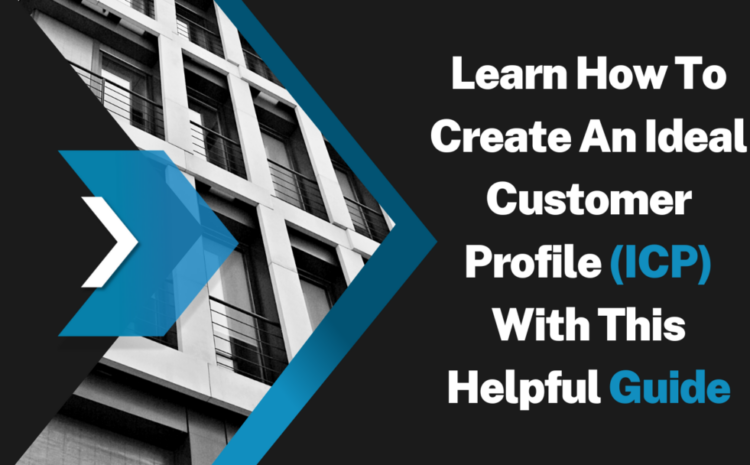Learn How To Create An ICP With This Helpful Guide
Discover how creating an Ideal Customer Profile (ICP) can help B2B salespeople succeed in prospecting. In a short story, Gary Halbert, known as the king of direct mail sales, illustrates the importance of having an ICP.
Gary used to host seminars for salespeople, marketers, and advertisers. During these events, he would pose a question to his students: “If you and I both owned a hamburger stand and were in a contest to sell the most hamburgers, what advantages would you want on your side?” Students would suggest advantages such as sesame seed buns, the best location, or the highest-quality meat. Some wanted the lowest prices. However, Gary had a different advantage in mind.
A STARVING CROWD.
As Gary Halbert once demonstrated, having a group of people who desperately need your product is a winning advantage in sales. In the B2B space, sales reps can find their own “starving crowd” by creating an Ideal Customer Profile (ICP).
- What an ICP is and the difference between ICP and buyer personas
- Why having an ICP is so important
- How to define your ideal customer profile
- Questions to ask yourself to help define your ICP
- Key takeaways
An ICP is a categorical description of the company that would be a perfect fit for your product or service. It’s based on real data about your customers and helps you spot prospects who are ready, willing, and able to buy your solution. Your ICP can include demographics, common pain points, industry, revenue, and any other relevant data that will help you identify the best-fit prospects.
For instance, let’s say you sell property management software that facilitates mobile inspections. After examining your happiest clients, you find that they have some common attributes, such as having a staff of 10-20, revenue of $500,000 to $1,000,000 per year, and being in the apartment property management industry. This categorical description of your best-fit customer is your ICP.
Here’s another example of an ICP:
What is the purpose of an Ideal Customer Profile?
An Ideal Customer Profile (ICP) is a crucial tool for B2B salespeople because it helps them quickly find and qualify leads, allowing them to spend more time selling to prospects who are genuinely interested in their product or service. By targeting accounts that match the ICP description, salespeople can focus their efforts on customers who truly need their solution, rather than wasting time on companies that view their solution as a “nice-to-have.”
However, even within these ideal companies, there are people with different titles, experiences, and responsibilities. To standardize who to contact and how to sell to them, salespeople should create Buyer Personas.
What is the Difference Between ICP and Buyer Persona
While the ICP describes a company that is the best fit for the product or service, the Buyer Persona is a description of the people inside those companies and a guide on how to sell to them. Creating Buyer Personas involves collecting data on prospects’ responsibilities, titles, goals, fears, and motivations, which helps salespeople understand their prospects and customize their pitch.
By combining the ICP and Buyer Personas, salespeople can create a sales playbook and a repeatable outreach process that helps them win more business.
To make the most of your time as a B2B salesperson, you should focus on contacting decision-makers who have final purchasing power when creating buyer personas. This way, you can ensure that you’re targeting prospects who are most likely to be interested in your product or service.
To illustrate the process of forming a buyer persona, let’s use a B2B SaaS company that sells sales engagement software as an example. Once you have your list of ICP best-fit companies to cold call, you need to determine which types of people inside those companies you should contact.
It’s important to note that not every title or role will be relevant to your product or solution. For example, it wouldn’t make sense to call the HR Director or VP of Product since their responsibilities and goals aren’t related to increasing outreach efficiency. On the other hand, the VP of Sales and the BDR Manager would care about increasing their salespeople’s efficiency, so you should target those two titles in your outreach.
After identifying the relevant titles, you should create separate buyer personas for each one, taking into account their responsibilities, motivations, fears, and pains. By tailoring your messaging and value propositions to each persona, you can increase your chances of success.
Although buyer personas will never be perfect, having an understanding of what specific prospects commonly want and need is better than going into a conversation blind and selling to everyone in the same way.
An Ideal Customer Profile (ICP) is important for many reasons. It allows businesses to focus their time and energy on the right prospects, helps salespeople close more deals faster, and helps you find new customers that will stick with your company for a long time, offering benefits like referrals and testimonials.
In the world of B2B sales, nailing your niche is the most critical factor in success. According to Aaron Ross, author of “Predictable Revenue” and “From Impossible to Inevitable,” the key to finding and marketing to the right companies is knowing who the best types of prospects are and what customers need your solution.
To understand your current clients and find the best possible prospects, the ones who need your solution, you have to create an Ideal Customer Profile. Aaron suggests that you must know your niche customers’ pains, wants, how to deliver, where to find them, how to engage with them, and how to prospect them. Without these answers, you cannot set up a repeatable sales process.








Write a Comment